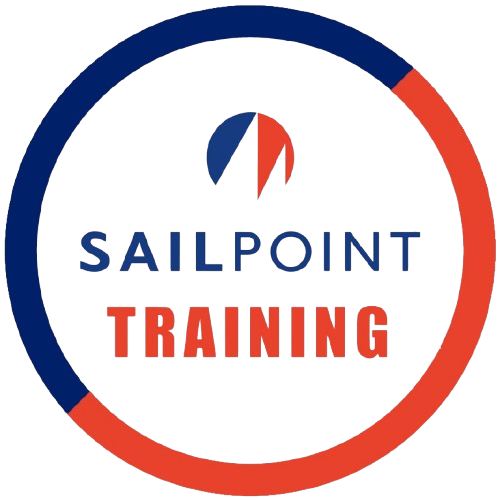Introduction: Why Governance Matters
Have you ever felt overwhelmed by the complexities of governance in the tech landscape? You’re not alone. As organizations increasingly turn to identity governance solutions like SailPoint, the need to grasp understanding governance features, workflows, and use cases becomes paramount.
Picture this: navigating through a sprawling city without a map. That’s what managing governance workflows can feel like if you lack proper training and tools. This article demystifies governance features, outlines essential workflows, and highlights practical use cases to help you make sense of it all.
What are Governance Features?
Governance features are the building blocks of any identity governance solution. They provide the framework that ensures effective control and oversight of user identities within an organization.
Key Features Include:
- Access Certification: Regular reviews to ensure users have appropriate access based on their roles. For instance, a quarterly review at a financial institution could reveal outdated access rights that need to be revoked.
- Policy Management: Establishing consistent policies that govern access and data protection. Take, for example, a healthcare provider enforcing HIPAA compliance through strict governance policies.
- Role Management: Defining roles and responsibilities helps prevent unnecessary privilege escalation. A retail company could create specific roles for different store positions to minimize access risks.
- Analytics and Reporting: Utilizing data to generate insights into access patterns and compliance levels. Companies often leverage dashboards to visualize governance insights, enabling quick decision-making.
These features aren’t just buzzwords; they facilitate smooth organizational operations while maintaining security protocols and regulatory compliance.
Understanding Workflows in Governance
Workflows dictate how governance features interact and operate. An effective workflow can streamline processes, enhance security, and improve user experiences.
Examples of Governance Workflows:
- Onboarding Workflow: When a new employee joins, automated workflows can provision accounts and assign roles, significantly reducing the burden on IT teams. Imagine a global tech firm that utilizes automated onboarding to minimize time-to-access for new hires.
- Offboarding Workflow: This ensures a smooth process when employees leave, revoking access promptly to prevent vulnerabilities. For instance, a high-security organization must remove access swiftly to protect sensitive information.
- Access Review Workflow: Regular audits of user access to verify that everyone still requires their permissions. This might be an annual process at a manufacturing company where roles frequently change.
Implementing efficient workflows can lead to significant time savings and better compliance outcomes. According to a report by Gartner, organizations can reduce their risk exposure by up to 60% with optimized workflows.
Real-World Use Cases of Governance
Understanding governance features and workflows is essential, but the real magic happens in their application. Let’s delve into some real-world scenarios where effective governance made a tangible difference.
Consider the case of a large bank that faced compliance difficulties. By implementing SailPoint’s governance solution to tackle understanding governance features, workflows, and use cases, they established robust access insights and minimized audit findings from multiple regulatory bodies.
Another example is a university that utilized identity governance to manage student and faculty access to sensitive data. By strategically defining roles and performing regular access reviews, they maintained compliance with federal regulations while providing a seamless user experience.
Future Trends in Governance Solution
As we look to the future, understanding governance features, workflows, and use cases will continue to evolve with emerging technologies.
- AI and Machine Learning: Expect to see more sophisticated predictive analytics helping organizations forecast and mitigate risks.
- Zero Trust Architecture: This model will become integral, emphasizing continuous verification of user identities, regardless of their location.
- Enhanced Integration Capabilities: Seamless integration with cloud solutions will allow for a more unified governance approach across diverse platforms.
Staying educated about these trends can position organizations to better anticipate changes and adapt their governance strategies accordingly.
Conclusion
Understanding governance features, workflows, and use cases is no longer optional; it’s essential for operational efficiency and compliance in today’s digital landscape. By getting familiar with key features, implementing effective workflows, and applying real-world use cases, organizations can enhance their governance strategies significantly.
Remember, the world of governance isn’t as daunting as it seems. With the right training and tools, you can navigate it confidently.
FAQs
What are the primary benefits of implementing governance features?
Implementing governance features helps organizations maintain compliance, minimize risk, and enhances operational efficiency by automating access management and identity governance processes.
How do workflows impact the effectiveness of governance solutions?
Workflows streamline processes, ensuring timely execution of access certifications, onboardings, and offboardings, which significantly reduces the likelihood of human error and enhances security posture.
Can you provide a specific industry example of effective governance?
A financial institution improved its compliance rate dramatically after implementing access certification workflows, leading to a substantial reduction in regulatory fines.
What role does technology play in governance?
Technology, such as AI and machine learning, enhances the capability to analyze data, predict risks, and automate governance tasks, making processes more efficient and effective.
How can organizations stay updated on governance trends?
Organizations can stay updated through industry publications, training sessions, workshops, and webinars focused on identity governance and digital transformation strategies.
